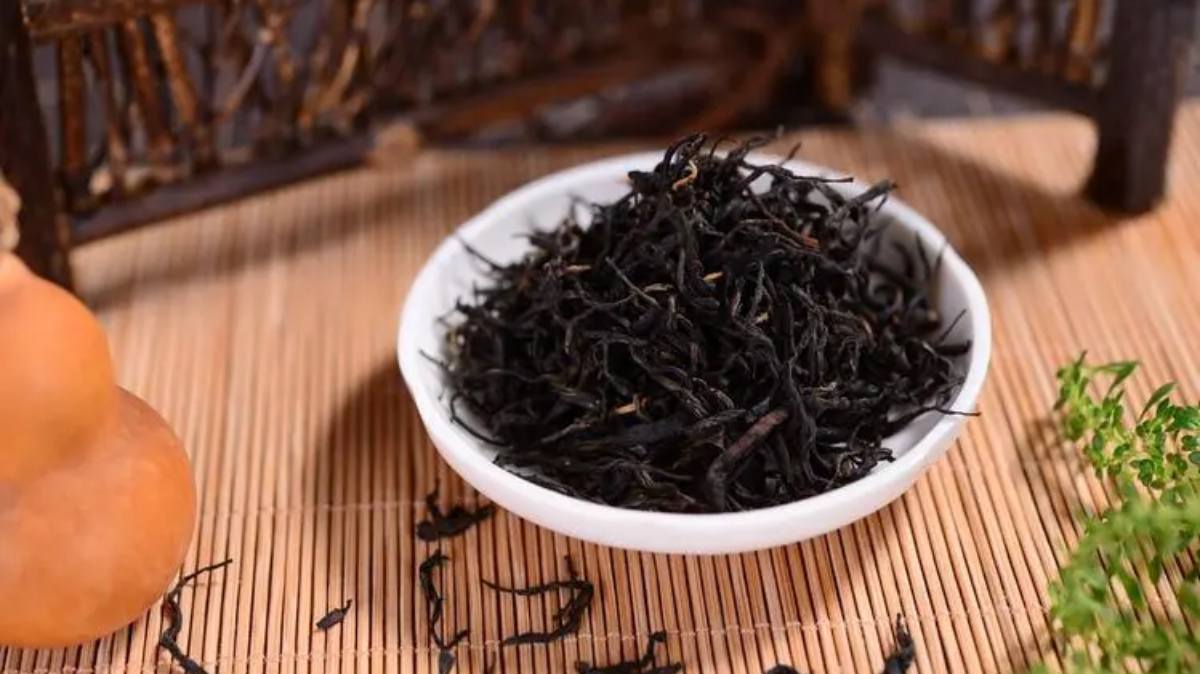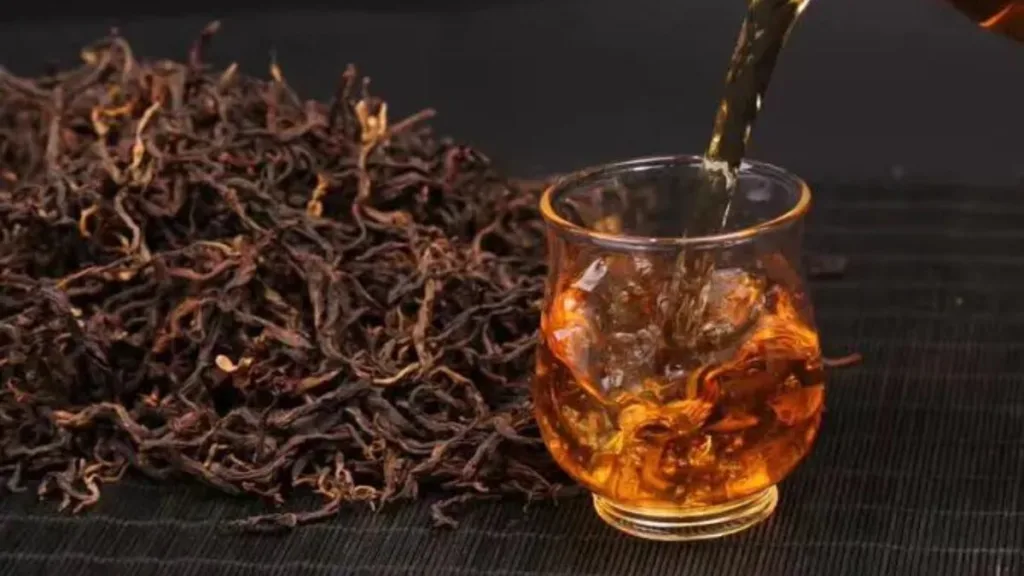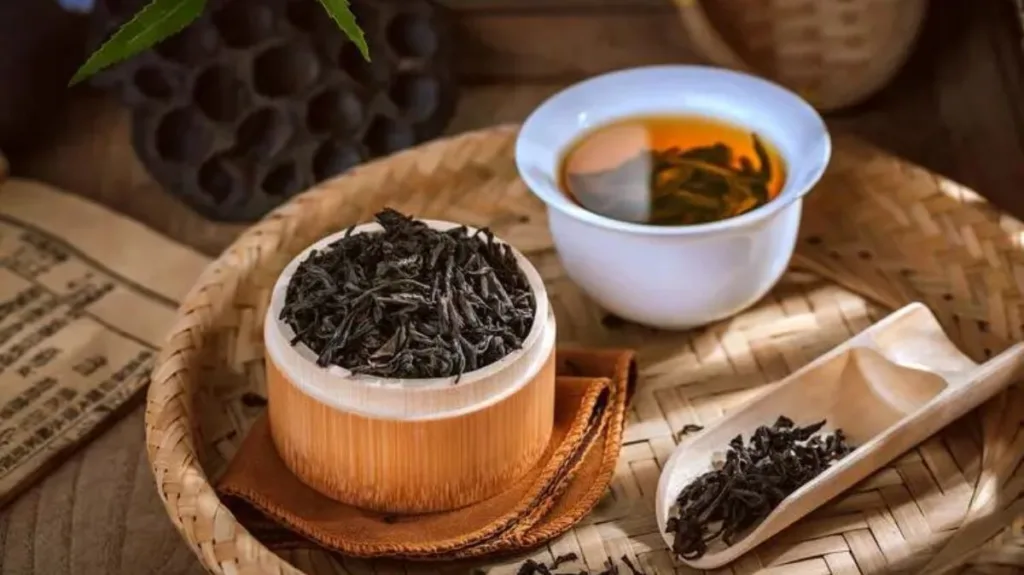Lapsang Souchong, also known as Zheng Shan Xiao Zhong, is a distinctive and renowned black tea hailing from China. In this introduction, we’ll explore the origins, history, brewing methods, and health benefits of this unique tea.
Origins:
Lapsang Souchong is a black tea made from the leaves of the Camellia sinensis plant, a member of the Theaceae family. The tea leaves are tightly rolled and exhibit a dark, smoky appearance, with a strong, robust flavor. The leaves are harvested in the high mountain valleys of China’s Fujian province in late June, just around the Grain Rain period.
The name “Lapsang Souchong” has its origins in the European tea trade. It was originally known as “Wuyi Bohea” in Europe, with “Wuyi” being a phonetic approximation of “Wu Yi,” the region in Fujian where this tea is produced. As the trade in this tea flourished, it became necessary to distinguish this high-quality black tea from imitations and lower-quality teas. As a result, the name “Lapsang Souchong” was coined. “Lapsang” denotes the region, while “Souchong” signifies the small, unopened tea leaves used for this tea variety.
History:
Lapsang Souchong’s history dates back centuries. It is believed to have originated in China and was introduced to Europe by Dutch traders in the late 16th century, around 1604. This tea quickly gained popularity, particularly in England and throughout Europe, and became a symbol of Chinese tea.
During its heyday in the mid-Qing Dynasty, it dominated the Chinese tea exports, with approximately 85% of exported black tea being labeled as Lapsang Souchong. Even after the Opium Wars, Lapsang Souchong continued to contribute significantly to China’s trade surplus. Its rich, smoky flavor made it a prized commodity, earning it the nickname “Bohea,” especially among the British.
Lord Byron, the famous British poet, even mentioned Lapsang Souchong in his epic poem “Don Juan,” praising it for its depth and character: “The best of all ways for my Isabella to regulate the ethereal spirals of the steam-inhaling receptacle of the genuine Wuyi Boh tea.” Such literary references highlight the high regard in which this tea was held.
Brewing Method:
Brewing Lapsang Souchong requires some attention to detail to bring out its unique flavor. Here are two recommended brewing methods:
- Individual Cup (Gaiwan):
- Use a gaiwan with a capacity of about 130ml.
- Start by pouring about one-third of the gaiwan’s volume with water heated to approximately 90°C.
- Add 3-5 grams of Lapsang Souchong tea leaves.
- Gently shake the gaiwan to ensure the leaves are evenly moistened.
- Slowly and gently pour more hot water along the inside of the gaiwan to avoid agitating the tea leaves.
- Allow the tea to cool to a suitable temperature before sipping and enjoying.
- Using a Gaiwan as a Main Brewing Vessel:
- This method focuses on quick steeping, ensuring that the tea liquid is well-separated.
- Use a gaiwan with a capacity of around 110ml and add 5 grams of tea leaves.
- Pour boiling water over the tea in a fast, efficient manner.
- Make sure that the tea is well separated with each infusion, as leaving the tea immersed for too long could lead to over-extraction and bitterness.
- You can typically brew Lapsang Souchong multiple times, with each steeping offering a unique flavor profile.
Health Benefits:
Lapsang Souchong, like other teas, offers several potential health benefits:
- Diuretic Effect: The caffeine and aromatic compounds in black tea can increase kidney blood flow, improve filtration rates, and promote urination. This can help in the elimination of excess waste and reduce water retention.
- Anti-Inflammatory and Antimicrobial Properties: The polyphenolic compounds in black tea have anti-inflammatory properties and can help kill or inhibit the growth of bacteria.
- Detoxification: The theaflavins and catechins in black tea are known to bind to heavy metals and alkaloids, aiding in detoxification.
- Mental Alertness: The caffeine in black tea can stimulate the central nervous system, providing a mental boost and increased alertness. It can also enhance cognitive function and memory.
- Hydration and Cooling Effect: Black tea can help quench thirst and provide a refreshing feeling on hot days, making it an excellent choice for summer. It can also help regulate body temperature.
- Antioxidant Effects: Like other teas, Lapsang Souchong contains antioxidants that can combat free radicals and potentially slow down the aging process.
- Gastric Benefits: Unlike green tea, which can be harsh on an empty stomach, Lapsang Souchong is less likely to irritate the stomach and may help soothe digestive discomfort.
- Potential Anti-Cancer Properties: Lapsang Souchong, like other black teas, contains polyphenols, which have been studied for their potential anti-cancer properties.
Please note that while Lapsang Souchong offers these potential health benefits, it’s essential to consume it in moderation as part of a balanced diet to fully enjoy its unique flavors and advantages.



